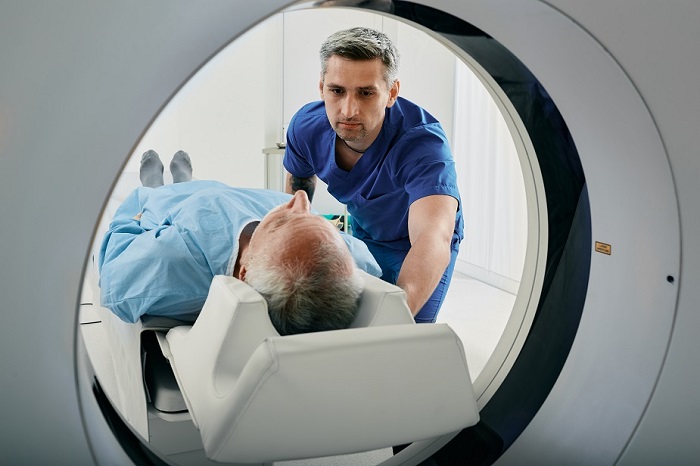New Treatment Combines MRI and Ultrasound to Control Prostate Cancer without Serious Side Effects
Posted on 29 Mar 2024
Prostate cancer is the most prevalent cancer among men, affecting one in eight during their lifetime. Traditional treatments like radiation or surgery carry potential side effects, including urinary incontinence and erectile dysfunction, which significantly impact the quality of life. Now, new research has revealed the efficacy of a minimally invasive approach using MRI and transurethral ultrasound for prostate cancer treatment.
Researchers at the David Geffen School of Medicine at UCLA (Los Angeles, CA, USA) have found that a technique known as MRI-guided transurethral ultrasound ablation (TULSA) offers a durable alternative for whole-gland treatment and does not preclude future treatment with surgery or radiation. The TULSA procedure involves inserting a device through the urethra to the prostate, where MRI guides the precise placement of ultrasound elements for therapeutic purposes. MR thermometry helps in monitoring and controlling the temperature within the prostate, ensuring it exceeds 55 degrees Celsius for effective treatment while preserving surrounding nerve tissues. This outpatient procedure, requiring two to three hours under general or spinal anesthesia, has shown promising outcomes.

The study involved 115 men across 13 sites in five countries, with 25 undergoing subsequent traditional treatments due to residual or recurring tumors. The findings indicated notable improvements in cancer reduction, prostate shrinkage, and lower prostate-specific antigen (PSA) levels, a cancer marker. One year post-TULSA, 76% of patients had no detectable cancer in follow-up biopsies, with a median prostate volume reduction of 92% within a year and a significant drop in PSA levels from 6.3 ng/ml to 0.63 ng/ml over five years. TULSA's side-effect profile was markedly favorable when compared to conventional treatments, showcasing a high rate of continence recovery (92%) and erectile function preservation (87%) after five years.
The overall insights gained from the study included the identification of early TULSA failure predictors, such as urethral calcifications and procedural issues related to prostate swelling and alignment, leading to improved detection and management of these preventable errors during the procedure. This research underscores the significant role of interventional radiologists in prostate cancer treatment, similar to their contribution to treating other cancers like those of the lung, kidney, and liver. Their expertise in imaging and image-guided interventions, combined with ablation experience, make them a vital part of prostate cancer treatment.
“The success of TULSA represents a revolution in whole-gland treatment for prostate cancer,” said Steven S. Raman, M.D., FASR, FSIR, professor of radiology, urology and surgery at the David Geffen School of Medicine at UCLA. “We have more research to do, but if validated, TULSA has the potential to change the standard of care for thousands of men.”
Related Links:
UCLA














